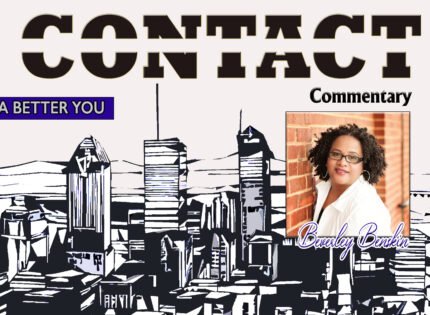Opinion
Some form of government-initiated intervention will not only be appropriate but timely and rewarding
By Bongs Lainjo
I like to perceive slavery as the “incarceration” of human beings (men, Women and children). A process during which the perpetrators use the victims as maids, farmers, laborers and yes, mistresses. There is of course the traditional definition of slavery where people are confined as legal property. And thankfully, this has since been outlawed. In this report, slavery and slave trade are used interchangeably.
One of the first things that comes my mind when I think about slavery is to highlight perpetrating countries like the US, Europe, Britain and their colonies, Brazil, India (whose perpetrators were the Portuguese) and indeed Canada. Canada? One is tempted to ask. In a background presented in Wikipedia, the following serves among others as a confirmation of Canada’s role in slave trade. “Slavery was a legal institution in all of the 13 American colonies and Canada (acquired by Britain in 1763)”. So yes, we were part of this shameful and inhuman trade: an activity that will continue to be part of our history.
In its 2016 Global Slavery index, the Walk Free Foundation reported that there are about 45.8 million people globally engulfed in contemporary facets of slavery. The report further states that more than half the population of modern slaves is in India, with 18.35 million; China with 3.39m; Pakistan with 2.13m; Bangladesh with 1.53, and Uzbekistan with 1.23m. These statistics were compiled from 42,000 interviews conducted in 53 languages. If these data were self-reported, there is the likelihood that the global population is higher.
And the dismal message needs to be taken seriously. We can no longer sit and hope that humanity would at some point self-evaluate and do what is believed to be the correct thing. Who would have thought that after over a century of outlawed slavery another transformed version of human humiliation would serve as the norm in some communities?
These compelling figures also serve as an obvious reminder that laws are only as effective as they are respected. The onus remains on us actors and onlookers alike to disapprove such activities in very strong terms and continue to advocate among different governments for better and more effective laws.
In an article published in the Montreal La Presse, it was stated that slavery in the Montreal region existed during a period of 200 years. And according to the paper, one of the slave owners was James McGill: the founder of McGill University. His case reminds me of the Jesuits in Georgetown University in 1838 that trafficked slaves in order to pay some of their bills; a case whose victims included a two-month old baby and her mother.
How disgusting.
Slavery, the paper continues served as one source of his wealth. Other owners included Marguerite D’Youville who had six children and who ended up the sisterhood; Frontenac, the Governor of New France; Madeleine De Verchères, popular in her attack of the Iroquois; and the Jesuits where many religious communities owned slaves.
The paper, citing historian Marcel Trudel (author and specialist on slavery), indicated that there were 1525 slaves in Montréal: 1007 Native American (who conducted intra ethnic slavery) and 518 blacks during the English and French rules. In the latter case, owners were the elites, traders, military officers, the clergies etc. The historian also went on to reveal that the women out-numbered the men with an average age of 17.7 years; specifically employed as maids with some as wives (mixed marriages were common) were ultimately accepted as legal wives of their respective masters. Men were generally used as traders of wool and participated in certain expeditions. It is generally known that between 1629 and 1833, there were 4200 slaves living in Québec.
Let’s now explore the dynamics of slavery in the Maritimes. First the role of the loyalists who were considered explicit owners of slaves and who regarded slaves as their property. But who were they? Wikipedia defines them as follows: “Loyalists were American colonists who remained loyal to the British Empire and the British monarchy during the American Revolutionary War.
At the time they were often called Tories, Royalists, or King’s Men; Patriots called them, “persons inimical to the liberties of America.” They were prominent slave owners who settled in Prince Edward Island (PEI), New Brunswick and Nova Scotia. They remained very adamant and outspoken when attempts were made to deprive them of their ownership. At some point among the three provinces, only PEI had the appropriate statute laws that were meant to address slavery and its effects.
In an article titled, “The Struggle over Slavery in the Maritime Colonies” by Harvey Amani Whitfield of University of Vermont, the author states that exact number of slaves in the Maritimes was unknown. He states that at some point “In 1784, Robert Morse estimated that there were 1, 232 “servants” at the Loyalist settlements. Exactly how many of these servants were slaves remains elusive”. According to the article, there is evidence that from 1713 to 1758, the total number of slaves peaked to about 300.
So, is Canada exonerated?
The evidence produced above points to the contrary. We were participants who promoted the acquisition of “cheap labor” from Africa who served as property and provided services to their slave masters when needed. Given the pro-activeness of our current “new deal” government, one would like to believe (using examples of the Aboriginal residential school and apology in the house of commons to Indians who were repatriated on arrival), that some form of government-initiated intervention will not only be appropriate but timely and rewarding. We all need to stop whining about the past and look forward to a more positive and inclusive Canada. And that is why establishing a cultural monument to highlight our shameful past will serve as an indication of remorse, understanding and empathy.
Bongs Lainjo
Is a Montrealer. He is a former UN Senior Advisor and author of “M and E: Data Management Systems”














